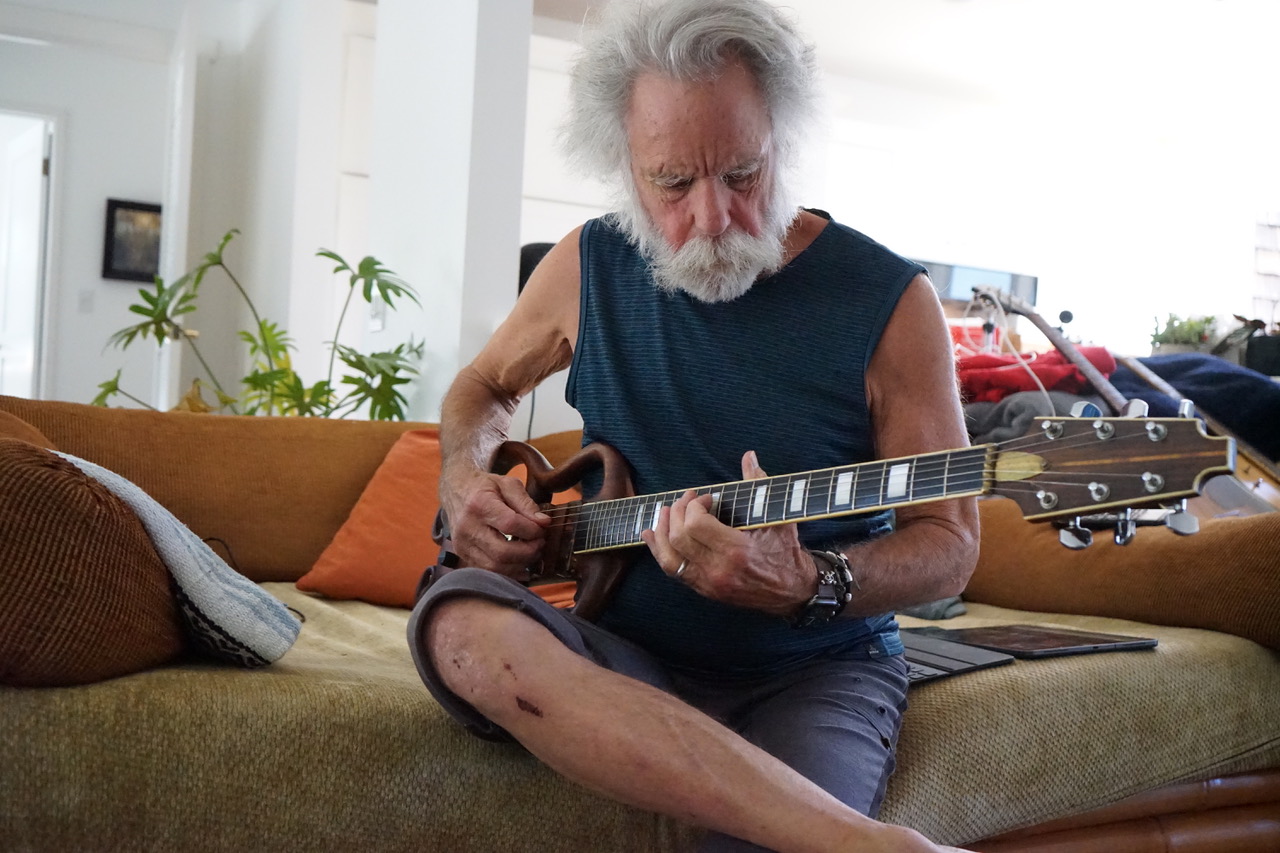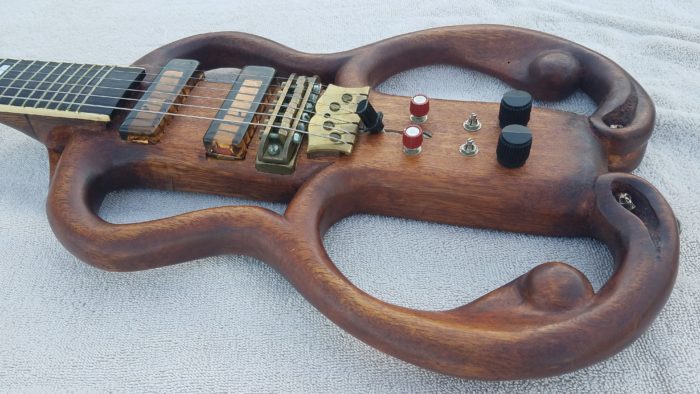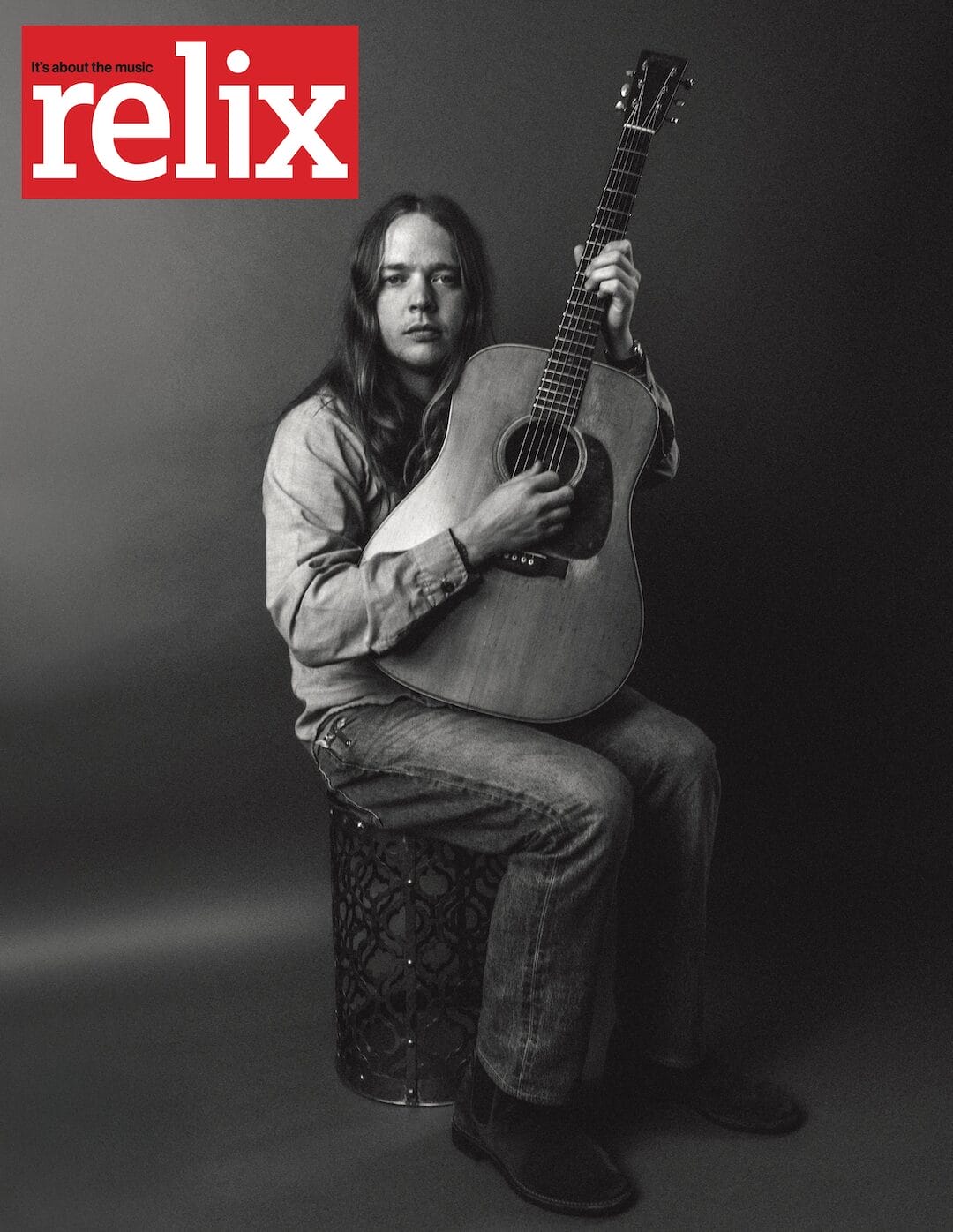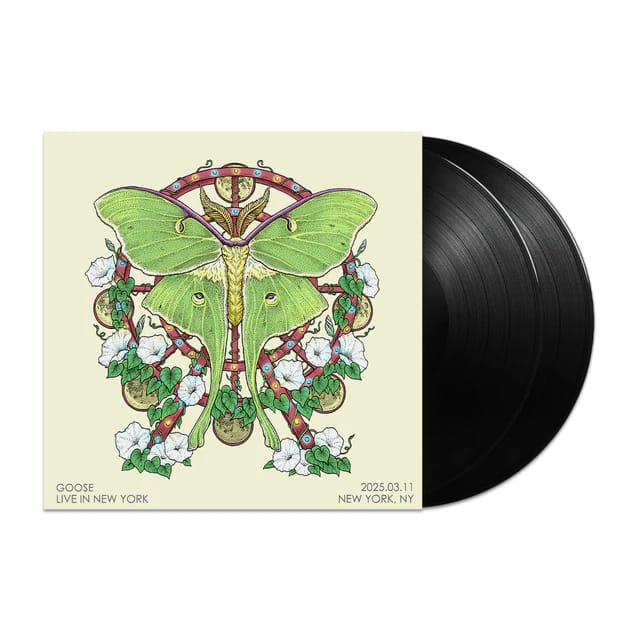Jerry Garcia’s “Pretzel” Guitar Resurfaces

Photos by Josh Agajanian
The Grateful Dead’s legendary Europe ‘72 tour—Sam Cutler’s magnum opus as the band’s tour manager—nearly killed him. “When we returned to America after the tour, I had a bleeding ulcer,” he says, calling from his current home country of Australia. “I went into a hospital, and nearly died.”
After Cutler recovered, he was given a gift by Jerry Garcia, perhaps because the guitarist had not visited his tour manager in the hospital. “To tell you the truth I think he felt a bit guilty, in a way, that he hadn’t come to see me,” Cutler admits. The gift was not get-well flowers or a card; it was a guitar, nicknamed “Pretzel” due to its pretzel-like body shape, that was one of the first built instruments by Alembic’s Rick Turner.
Cutler says that the guitar was “built for Jerry.” Turner remembers it slightly differently; he never mentions that it was built specifically for Garcia, but he does confirm that Garcia owned the guitar. “I mean Garcia saw it, thought it was cool,” Turner explains. “He got it from us and wound up not liking that it was a peg head diver,” meaning that, due to weight distribution, the head of the guitar dives below the body when using a strap. Regardless, the guitar wound up in Garcia’s hands after it was built in 1971, and then in Cutler’s in 1972 or ‘73.
Just a couple years later, the guitar vanished. It was stolen after Cutler put the guitar in storage around 1975, and its whereabouts were a mystery for a number of years. What was not a mystery, according to Cutler, is who took the instrument.
“I know exactly who stole it,” he says, bluntly. “This guy who used to hang out around with the Grateful Dead also stole a motorcycle of mine that was given to me by the Manhattan chapter of Hells Angels.” At the time, Cutler was in India and had parted ways with his material possessions—“It was my turn to be a hippie”—and he assumed it was gone for good. But then, a number of years later—“the current era,” as Cutler describes it—he got a call from Turner saying that the guitar had resurfaced.
“It must’ve been last November, this guy gets in touch with me and says, ‘I have a guitar that I think you might have made,’” says Turner. To confirm, Turner requested pictures of the guitar, and when he got the images back, he knew he had found Cutler’s instrument. While the guitar was the second pretzel-bodied guitar that Turner made, this guitar itself is unmistakable; besides the distinct body shape, it has two solid gold skulls embedded in the body towards the bottom, which Cutler had Turner install after Garcia gifted him the instrument.
After Turner informed Cutler that the guitar had been found, the erstwhile tour manager got in touch with the current owner. He elaborates: “I wrote to the guy. I said, ‘Listen, this is what happened to that guitar, this is the guy that stole it, this is when it was stolen, blah, blah, blah… I want it back.’ But the guy was very nice actually, to tell the honest truth. He was very sweet about it. He said that he’d given 10,000 dollars for it, it was the only guitar he’d ever owned, it had been in a closet in his house for 25 years, which seemed highly improbable to me, but what the hell. I just wanted it back.”
As Cutler was not in the United States, he then enlisted his friend Jason Scheuner, who is himself a collector of Dead-related instruments including Phil Lesh’s “Mission Control” bass guitar, to handle the process of recovering the guitar. “Sam mentioned to Rick Turner that he wanted me to take the lead and sort of act on his behalf,” explains Scheuner. “He knew that I understand the intricacies of something like an instrument like this.” Scheuner also loaned Cutler the money to acquire the guitar.
Scheuner took charge of the situation in May of this year, and he was able to confirm that the guitar’s owner was “very much legit”: “he was exactly who he said he was, he got it when he said he got it, from the person he said he got it from, so on and so forth,” says Scheuner. He then organized the sale of the guitar; a friend of his who lived near the Virginia town where it was completed the exchange and then flew with the guitar—who had its own first-class seat—back to San Francisco, where it was hand-carried to Turner to inspect in late June.
On June 28, Turner inspected the guitar and, miraculously considering its unknown history, deemed it in “original condition.” The guitar was then brought back to Scheuner (who is now its custodian), but not before it was brought to Bob Weir. Scheuner tells that the person who brought it from Turner to him was going to see Weir this past July 4. “Make sure Bob wants to see it; don’t shove it down his throat,” Scheuner remembers telling his friend. Weir was eager to check it out, and he admitted that he remembered the guitar being in Garcia’s hands, that it was given to Cutler and that it was stolen. He then gave the guitar a try (see photo above).
While the guitar was never used on stage by Jerry Garcia, it is still an incredibly important piece of history. Many of its features—the stacking of different types of wood, the scalloped brass nut, the hand-wound (by Turner) pickups—became staples of the Alembic build style. “This instrument is a history lesson in the development of Alembic instruments, and all of the exotic instruments that stemmed from that,” notes Scheuner. “It has all of these elements that became the signature elements of Alembic and Doug Irwin. This instrument is, for some of those things, the genesis, for some of those things the turning point.”
It is unclear where the guitar will end up; Cutler is not in the position to possess it, and Scheuner makes it clear that he will only be the guitar’s caretaker “for a short time while we find it an appropriate, long-term home.” However, regardless of where “Pretzel” ends up, its recovery adds another installment to the lore of Grateful Dead instruments.

“Pretzel” Guitar details (compiled by Jason Scheuner)
Body: Honduran Mahogany
Neck: 5 piece Mahogany, Walnut, and Maple
Finger board: Ebony (27 frets)
Fingerboard Inlays: Mother of Pearl
Nut: Scalloped Brass
Back Plate and Truss Rod Cover: Hammered Brass
Bridge: Brass (U-Channel) 2nd Gen design by Rick Turner
Tailpiece: Brass and Walnut
Headstock overlays: Rosewood
Headstock Inlay: Marquetry
Binding: White Celluloid
Tuning Machines: Schaller (chrome)
Skulls: 22k Gold
Pickups: Very early TURNER/ALEMBIC Single Coils, Copper Foil Shielding cast in polyester
Pre Amps: Second generation Ron Wickersham Preamp with adjustable gain, passive tone controls



















